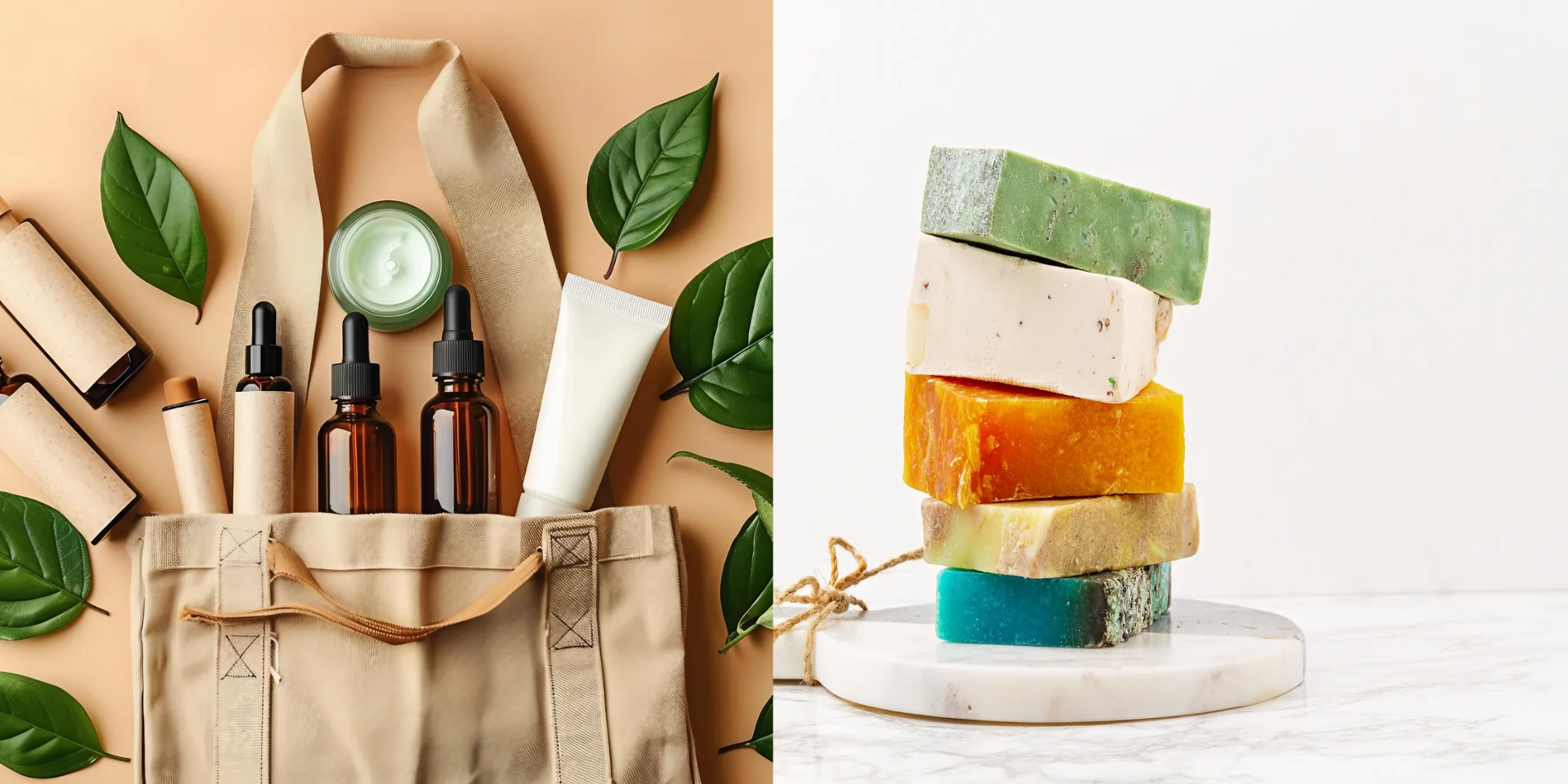Are you tired of drowning in packaging, watching your trash bin overflow every week, and feeling guilty about your environmental impact? What if I told you that transforming your home into a zero-waste haven isn’t about becoming a militant eco-warrior, but simply about making smarter choices that save you money and time?
Welcome to the most practical zero-waste guide you’ll ever read. No judgment, no impossible standards – just real strategies that work in real homes, backed by EPA guidelines and proven by thousands of households worldwide.
Why Most Zero-Waste Attempts Fail (And How to Succeed)
Let’s be honest: most people approach zero-waste like a crash diet. They throw out all their plastic containers, buy expensive bamboo everything, and burn out within a month when they realize they’ve just created more waste and spent a fortune.
The secret? It’s not about perfection – it’s about priorities.
The EPA’s waste management hierarchy gives us the perfect framework: Refuse → Reduce → Reuse/Repair → Recycle → Rot. Notice how recycling comes fourth, not first? That’s your first mind-shift right there.
The $200 Reality Check
Here’s what most “zero-waste starter guides” won’t tell you: switching from disposable plastic to disposable paper or bamboo alternatives can actually increase your environmental footprint. That $15 bamboo toothbrush? It needs to replace about 50 plastic toothbrushes to break even environmentally. The magic happens in the “reuse” part of the equation.
Room 1: Your Front Door – The Waste Prevention Command Center
Think of your entryway as border security for trash. This is where 30-50% of household waste enters, so let’s stop it right here.
The Go-Bag Strategy
Create your “never-caught-off-guard” kit:
- 2-3 foldable shopping bags (because you’ll forget one, lose one, and lend one to a friend)
- Insulated tumbler with a wide mouth (trust me on the wide mouth – it fits under every coffee machine)
- Portable utensil set in a small pouch
- Thin produce bags for fruits and veggies
Pro tip: Keep a backup set in your car. You’ll thank me when you’re standing at Whole Foods with $80 worth of groceries and no bags.
Mail Interception Mission
Those credit card offers and furniture catalogs? They’re not just annoying – they’re preview trailers for landfills. Spend 20 minutes setting up:
- Catalog Choice (catalogchoice.org) to stop unwanted mail
- OptOutPrescreen (optoutprescreen.com) for credit offers
- DMAchoice (dmachoice.org) for marketing mail
Estimated time saved per year: 12 hours of mail sorting. Paper saved: About 40 pounds annually.
Room 2: Kitchen – Where Food Waste Goes to Die
The kitchen is both your biggest challenge and your biggest opportunity. Food waste accounts for about 30% of household waste, and it’s the easiest to tackle once you have a system.
The Friday Night “Fridge Forensics”
Make Friday nights your “Clean Out the Fridge Night.” No, this doesn’t mean eating wilted lettuce – it means getting creative. That half onion, leftover rice, and random vegetables? Congratulations, you just found tonight’s stir-fry ingredients.
The 5-Minute FIFO System: First In, First Out isn’t just for restaurants. Use masking tape to label everything with opening dates. Your future self will thank you when you’re not playing “sniff test roulette” with that yogurt.
Bulk Buying Without the Bulk Headaches
Find your local refill stations: These aren’t just for granola enthusiasts anymore. Whole Foods, many co-ops, and specialized bulk stores let you bring your own containers for:
- Grains, nuts, and legumes
- Cleaning supplies
- Personal care products
Can’t find bulk stores? Buy the largest size available and divide into smaller containers immediately. That 5-pound bag of rice becomes 10 perfectly portioned freezer meals.
The Great Takeout Transformation
Here’s your new default phrase for food delivery: “No utensils, napkins, or condiments, please.” Most apps let you save this as a permanent note.
Going further? Call restaurants directly and ask if they participate in container return programs. Cities like Portland, San Francisco, and Austin have growing networks of restaurants accepting reusable container systems.
Room 3: Bathroom – The Plastic Paradise Problem
Bathrooms generate surprising amounts of waste – think about it: shampoo bottles, razor cartridges, cotton swabs, makeup containers. The good news? This room has some of the most satisfying swaps.
The Solid Bar Revolution
Shampoo and conditioner bars aren’t just trendy – they’re practical magic. One bar typically lasts 2-3 months, equivalent to 2-3 bottles, with zero packaging. Brands like Ethique, HiBAR, and even drugstore options are reformulating constantly.
Pro tip: Keep bars dry between uses with a soap lift or slotted dish. Soggy bars = sad bars.
The Safety Razor Investment
Yes, there’s a learning curve. Yes, you might nick yourself initially. But here’s the math: A pack of 10 safety razor blades costs about $2 and lasts 6 months. Those 5-blade cartridges? You’re looking at $15+ for the same period.
Bonus: Once you master the technique, you’ll get a closer shave than any cartridge system.
Microplastic Reality Check
Those exfoliating scrubs with the little beads? Many contain polyethylene microbeads that slip through water treatment systems and end up in waterways. The IUCN identifies personal care products as one of seven major sources of primary microplastics in our oceans.
Simple swap: Sugar, coffee grounds, or oatmeal work just as well and dissolve completely.
Room 4: Laundry Room – The Microfiber Battlefield
Here’s something your favorite eco-blogger probably hasn’t mentioned: every load of laundry releases thousands of microfibers into wastewater. Synthetic fabrics like polyester shed microscopic plastic fibers that end up in rivers and oceans.
The Microfiber Minimization Strategy
Washing machine filters are becoming more common in Europe and starting to appear in North America. If installation isn’t possible, try:
- Guppyfriend washing bags: German-engineered bags that catch microfibers
- Cora Ball: A bio-mimetic device inspired by coral that catches fibers in the wash
Temperature and Load Optimization
Cooler water = fewer fibers released. The friction from hot water and aggressive washing cycles literally tears tiny pieces off synthetic clothing.
Full loads only: Half-empty machines create more agitation and friction. Your clothes bash against each other more, releasing more microfibers.
The Natural Fiber Investment
This isn’t about throwing out your entire wardrobe tomorrow. But when replacing worn items, consider:
- Cotton, linen, hemp, wool shed biodegradable fibers
- Blend fabrics (cotton-poly mixes) shed fewer plastic fibers than 100% synthetic
- Higher quality synthetics tend to shed less due to tighter weave construction
Room 5: Living Room & Bedroom – The Long Game
These rooms are about durability over disposability. The goal isn’t to replace everything immediately – it’s to make different choices when things naturally need replacing.
Furniture That Lasts Forever (Or Close)
Modular and repairable wins: IKEA’s getting hate for particle board furniture, but their modular systems mean you can replace single broken pieces instead of entire units.
The Craigslist treasure hunt: Solid wood furniture from the 1960s-80s often outlasts modern alternatives. A $50 Facebook Marketplace dresser that lasts 20 years beats a $200 new dresser that lasts 5.
Electronics and the Upgrade Trap
Resist the upgrade itch: That 3-year-old smartphone works fine. The latest laptop offers marginal improvements. The real environmental cost isn’t in the device you keep – it’s in the device you unnecessarily replace.
Cable management: Keep old charging cables and dongles. The specific USB-C cable you need will be discontinued exactly when you need to replace it.
Room 6: Home Office – Paper Trails and Package Pileups
The rise of remote work has created new waste streams: more packages, more paper, more everything delivered to our doors.
The Package Reuse Revolution
Create a packaging station: One large box for bubble wrap, another for padded envelopes, a third for sturdy boxes. Your neighbors will love you when you offer them free packing materials.
Community packaging exchanges: Some neighborhoods have Little Free Library-style packaging exchanges. No luck finding one? Start your own.
Digital-First Documentation
Default to digital signatures: DocuSign, Adobe Sign, and even free options like PandaDoc eliminate most printing needs.
Cloud-based annotation: Tools like PDF Expert, GoodNotes, or even Google Docs let you mark up documents without printing.
Rooms 7-8: Kids & Pets – Safety Meets Sustainability
Parenting and pet ownership create unique challenges. Safety and hygiene can’t be compromised for environmental goals.
The Toy Library Concept
Rental and sharing systems: Toy libraries are expanding across North America. Monthly subscriptions give kids variety without permanent accumulation.
Buy-back programs: Some toy manufacturers now offer buy-back programs for outgrown items.
Pet Waste Reality
Composting pet waste: Most home composting systems can’t safely process pet waste due to pathogen concerns. However, some municipalities offer pet waste composting programs.
Bulk buying: Pet food in 40-50 pound bags dramatically reduces packaging per pound compared to small bags.
Room 9: Outdoor Spaces & Entertainment – Zero-Waste Socializing
Parties and outdoor gatherings are waste generation events waiting to happen. But they don’t have to be.
The Rental Revolution
Party supply rentals aren’t just for weddings anymore. Many cities have companies renting everything from plates and glasses to decorations.
Community equipment sharing: Pressure washers, lawn mowers, party tents – these expensive, occasionally-used items are perfect for neighborhood sharing agreements.
Beverage Strategy
Dispensers over individual containers: A 5-gallon water dispenser generates less packaging waste than 40 individual bottles.
BYOC (Bring Your Own Cup): Make it part of the invitation. People actually enjoy having a designated cup for the evening.
The High-Impact Quick Wins
If you only have bandwidth for a few changes, prioritize these highest-impact actions:
Tier 1: Immediate Impact
- Weekly meal planning: 30 minutes of planning saves 3-5 hours of food waste management
- Reusable water bottle habit: Replaces 3-5 disposable bottles per day for active people
- Composting setup: Diverts 30% of household waste immediately
Tier 2: Medium-Term Consistency
- Bulk buying routine: Monthly bulk shopping reduces packaging by 40-60%
- Bathroom product swaps: Solid bars and refillable containers
- Microfiber reduction: Washing machine filters or bags
Tier 3: Long-Term Investments
- Appliance and furniture durability choices: Buy-it-for-life mentality
- Clothing material awareness: Natural fiber priority for new purchases
Your 30-Day Zero-Waste Transformation
Week 1: Foundation Setting
- Day 1-3: Create go-bag and entryway system
- Day 4-7: Implement Friday “fridge forensics” and meal planning
Week 2: Bathroom and Personal Care
- Day 8-10: Switch to solid bars and reusable alternatives
- Day 11-14: Set up refill stations and bulk buying routine
Week 3: Kitchen and Food Systems
- Day 15-18: Start composting (whichever system works for your situation)
- Day 19-21: Implement takeout and dining-out changes
Week 4: Measurement and Refinement
- Day 22-24: Install microfiber reduction system
- Day 25-28: Compare waste output, spending, and time investment
- Day 29-30: Plan next month’s improvements
The Economics of Zero-Waste
Let’s talk numbers, because environmental benefits mean nothing if you can’t afford them.
First Month Investment: $150-300
- Reusable containers, bags, and bottles: $75
- Solid bars and refillable products: $50
- Composting setup: $25-100
- Microfiber reduction tools: $15-75
Monthly Savings After 3 Months: $80-150
- Reduced disposable product purchases: $40-60
- Less food waste: $25-40
- Bulk buying discounts: $15-30
- Reduced trash service needs: $0-20 (varies by location)
Annual Net Savings: $800-1500
Most families break even within 2-3 months and see significant savings afterward.
Common Myths That Trip People Up
“Paper is Always Better Than Plastic”
Reality check: Paper bags require 70% more air pollutants to manufacture than plastic bags. The environmental benefit only kicks in if you reuse that paper bag 3+ times. The winner? Bringing your own bag every time.
“Recycling Fixes Everything”
Hard truth: Only about 9% of all plastic ever produced has been recycled. The recycling industry is struggling with contamination, market demand, and processing limitations. Recycling is important, but it’s the fourth priority, not the first.
“Zero-Waste is All or Nothing”
Gentle reality: Perfect is the enemy of good. A household that reduces waste by 70% has dramatically more impact than someone who gives up entirely because they couldn’t achieve 100%.
When Life Gets in the Way
Apartment Living Challenges
No yard composting space? Look for:
- Community composting programs
- Worm composting (surprisingly apartment-friendly)
- Municipal food waste collection
- Electric composting appliances
Time-Crunched Solutions
Focus on system changes, not daily decisions:
- Set up automatic bulk deliveries
- Prep reusable items the night before
- Choose restaurants and stores that align with your values
- Make zero-waste the default, not the exception
Budget Constraints
Free and low-cost priorities:
- Reduce food waste through better planning (saves money immediately)
- Use containers you already own before buying new ones
- Join community sharing groups for occasional-use items
- Focus on refusing unnecessary items rather than buying alternatives
Your Zero-Waste Starter Shopping List
Under $25 Essentials
- 3 reusable shopping bags
- 1 water bottle
- 1 coffee cup
- Basic utensil set
- Masking tape for labeling
$25-75 Upgrades
- Glass storage container set
- Solid shampoo and soap bars
- Microfiber washing bag
- Reusable produce bags
$75+ Investments
- Water filtration system
- Composting setup
- Safety razor
- Washing machine filter
Measuring Success (Without Going Crazy)
Weekly Tracking Made Simple
Count trash bags: How many bags per week are you putting out? Aim for 20-30% reduction in the first month.
Photo inventory: Take a picture of your fridge before and after weekly meal prep. Visual progress is motivating.
Spending snapshots: Track one category per month (like beverages or cleaning supplies) to see financial impact.
Monthly Celebrations
What’s working: Note which changes feel effortless now What’s challenging: Identify barriers and brainstorm solutions What’s next: Pick one new room or system to tackle
The Ripple Effect Nobody Talks About
Here’s what happens after 3-6 months of consistent zero-waste practices:
You become a resource for others: Friends start asking for advice, creating community impact beyond your household.
You develop “waste radar”: You start noticing packaging waste everywhere and making different choices automatically.
You save time: Fewer shopping trips, less trash management, and reduced decision fatigue from having systems in place.
You feel more prepared: Always having reusable items creates a sense of self-reliance and reduces daily stress.
The Bottom Line
Zero-waste living isn’t about achieving perfection or joining an exclusive club of environmental purists. It’s about making thoughtful choices that align with both your values and your reality.
The most successful zero-waste households are the ones that started small, stayed consistent, and focused on progress over perfection. They didn’t transform overnight – they built sustainable systems that worked with their lives, not against them.
Your journey starts with a single reusable bag, a meal plan, or simply saying “no thanks” to that plastic fork. From there, each small change builds momentum for the next one.
Ready to start? Pick one room, choose one strategy, and give yourself a month to make it a habit. Your future self (and your trash bin) will thank you.
What’s your biggest zero-waste challenge? Have you tried any of these strategies? Share your experience in the comments below – your insights might be exactly what another reader needs to hear.
Want more practical sustainability tips? Subscribe to our newsletter for weekly strategies that actually work in real life, not just in Instagram photos.







